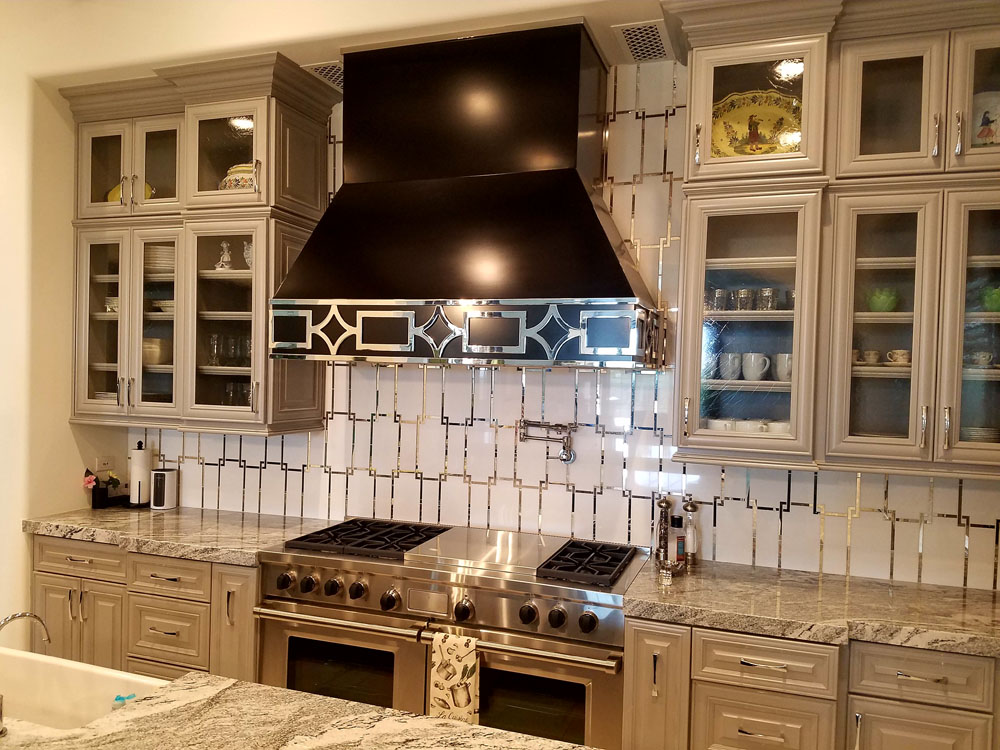A high-quality range hood is an essential appliance in a kitchen, helping to remove cooking odors, grease, and pollutants from the air. Several factors contribute to the overall quality and effectiveness of a range hood. Here are key features to consider when evaluating the quality of a range hood:
- Airflow (CFM):
- Cubic Feet per Minute (CFM) is a measure of the range hood’s airflow. A higher CFM indicates a greater capacity to move and filter air. Choose a range hood with an appropriate CFM rating based on the size of your kitchen and the type of cooking you do.
- Ventilation Type:
- Range hoods come in various ventilation types, including ducted (vented) and ductless (recirculating). Ducted hoods exhaust air outside, while ductless hoods filter and recirculate air. Ducted hoods are generally more effective in removing pollutants, but the choice depends on your kitchen layout and preferences.
- Fan Speeds:
- Adjustable fan speeds allow you to control the ventilation intensity based on your cooking needs. Multiple speed settings provide flexibility and energy efficiency.
- Noise Level:
- A quieter range hood enhances the overall kitchen experience. Look for models with lower sones (a unit measuring sound levels) for reduced noise during operation.
- Size and Coverage:
- The size of the range hood should match the size of your cooktop or range. It should cover the entire cooking area to effectively capture and exhaust cooking byproducts.
- Filter Types:
- Range hoods use various types of filters, such as baffle filters, mesh filters, or charcoal filters. Baffle filters are effective at trapping grease, while charcoal filters help remove odors. Some range hoods feature dishwasher-safe filters for easy cleaning.
- Material and Build Quality:
- High-quality range hoods are made of durable materials, such as stainless steel or other corrosion-resistant metals. A well-built hood is likely to withstand the rigors of daily use and last longer.
- Lighting:
- Built-in LED lighting enhances visibility over the cooktop. Look for range hoods with bright and energy-efficient lighting to illuminate your cooking area.
- Controls and Features:
- Intuitive controls, digital displays, and features like delay shut-off or auto shut-off add convenience. Some advanced models include smart features that can be controlled via mobile apps or voice commands.
- Brand Reputation:
- Consider purchasing from reputable brands with a history of producing reliable and durable appliances. Reviews and ratings from other users can provide insights into the performance and reliability of a specific range hood model.
- Installation and Ventilation System:
- Ensure that the range hood is installed correctly, and the ventilation system is compatible with your kitchen setup. Professional installation may be necessary for certain models.
Is the Range Hood Without Power?
Range hoods are either hardwired into the house’s mains supply or plug into a wall. When the fan and light do not turn on, it is essential to check if a fuse has blown.
The Range Hood’s Light Isn’t Turning On
The first order of business is to inspect the light bulb if the hood fan is running but the light is not turning on. Replacing the bulb in circumstances when it has been burned out. If the problem persists, the source of the problem could be a broken light switch or a faulty light socket. This is frequently available for purchase and is simple to set up. However, if the switch is broken, you may need the help of a professional repairman.
When the Air Conditioner Isn’t Working
In this case, one or both of two frequent concerns are likely to be at play. To begin with, an on-off switch may be broken, or the fan motor may have burned out. It’s preferable to employ a handyman to fix these problems unless you have good repair skills. You can use an ohm meter to check the fan switch if you want to figure out what part isn’t working. If there is no continuity, the switch is not faulty, and the problem is more likely to be the fan motor.
Other Recommendations for Upkeep
Your range hood will not only not perform at optimal efficiency if the filter is not cleaned of all the grease buildup on the fan and filter, but it will also shorten the appliance’s lifetime expectancy – not to mention create a potential fire hazard. Cleaning your range is very simple and does not take much time.
- Locate the filter underneath the hood using the appliance instructions and carefully remove it.
- Remove any grease from an aluminum filter with hot water and soap. Before reinstalling the filter, let it air dry.
- Wipe the interior and outside of each blade with hot, soapy water.
- When you’re through, put everything back in its place and reconnect the range’s electricity.





